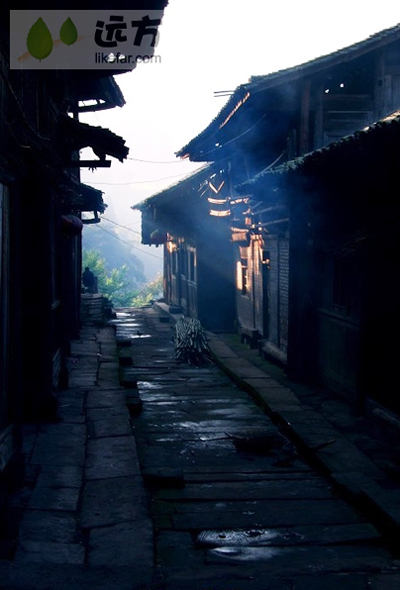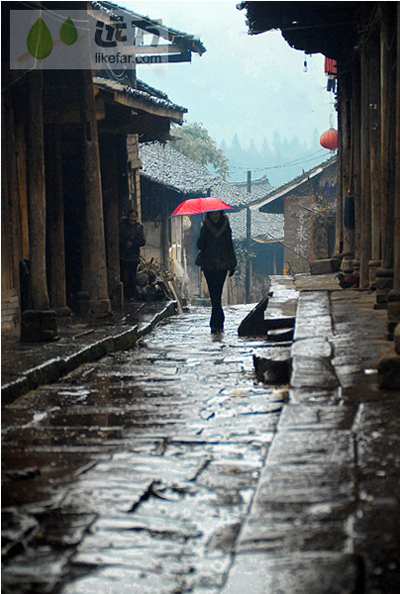The most enchanting town on the ancient tea route
|
Wangyu ancient town at dawn |
My knowledge about Wangyu ancient town was first obtained from the feature about Rain City Ya'an at CCTV's National Geography Forum. The program vividly captures the historical charm and pristine joy that long has been shielded from the glitz and glamour of modern cities. So from then on, Wangyu has been highlighted on my dreamed destination list.
Situated in the south of Yaan City of southwest China's Sichuan Province, Wangyu ancient town used to be an important dak on the ancient tea route. It is known for the local specialty, Yayu fish. Since the main dwellings are built on a colossal rock at the mountainside, which is quite likened to a giant cat looking down at the fish swimming in river, the town got its name, Wang (look) Yu (fish).
|
The old alley is a quiet, narrow and straight street pitched by a long-worn flagging, which shimmers faintly due to years of erosion in the rainy climate. |
The uniqueness in the little-known ancient town unfolded little by little when I climbed along hundreds of stone steps leading up to the old alley. Several minutes ago, I was walking in a modern village deprived of any architectural features, while the time managed to transfer to the 1950s, or 1960s, in the old alley, just in a blink of our eyes.
The old alley is a quiet, narrow and straight street pitched by a long-worn flagging, which shimmers faintly due to years of erosion in the rainy climate. There are seldom any people around, with one or two chickens standing in the middle of the alley. But vitality still can be found all around: Old men bathe in the sun, a few students hurry for school, golden corns hang under the eaves.
A casual stroll along the wooden structured green tile houses brought my thoughts to the businessmen and horses on the ancient tea route a thousand years ago. The sophisticated tiles, wall corners, adjacent of windows, as well as ornate carvings on plinth, all tell how prosperous it was in its prime. The buildings on both sides used to be yamun, bank, hockshop, pharmacy, embroidery shop, inn, restaurant, tea house and theatre, but now most of them are common civil residences.
In the residences, there are no sand and stones used as construction materials, except for the wall. Tiles are black. Like in any ancient town in China, I always find myself fascinated by craftsmen's persisted pursuit of elaborated details. Here, wooden decorations on windows show various animals, while piers used for supporting functions have four or eight sides; each side is engraved with fine patterns.
Wangyu has a rainy and humid climate, so lichens bringing the mark of past times have sprawled to almost everywhere. Under such weather, ancient people invented a fairly good drainage system called "Tianlou."
The houses consist of a gate, sliding slot and gate pivot hole. The floors have difference in height with the ground of the alley; in addition, in front of some doorways, there are steps to obstruct water from getting in. But what's more surprising is the various shaped holes between the steps and the ground of the alley, which are used to form a complete drainage system.
Wangyu ancient town is a nice site for a thoughtful walking tour, while it offers a fragment of fading history. Saunter into it, and take a breath of refreshing nature, something may well remind you of your hometown miles away.
 0
0 








